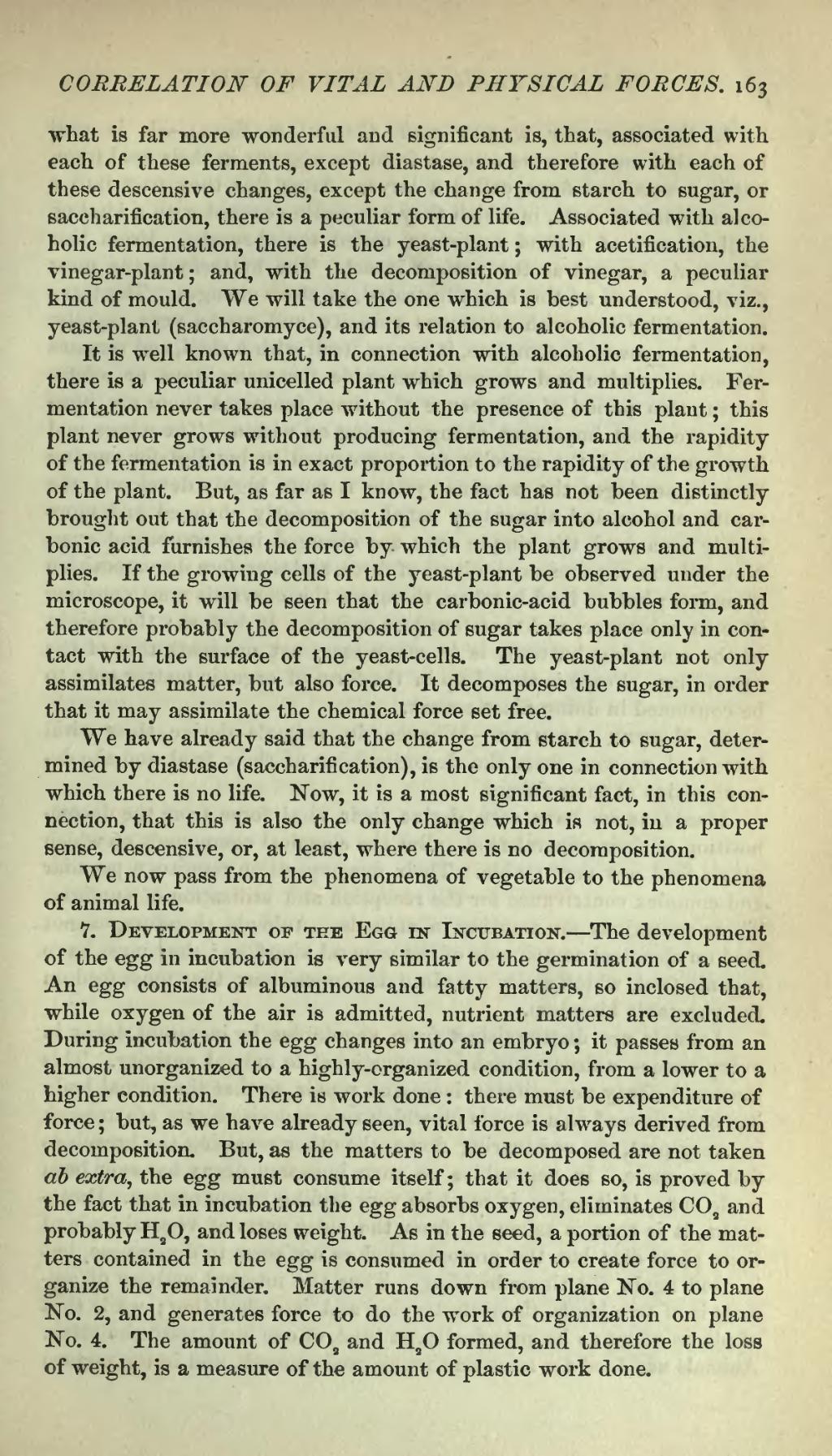what is far more wonderful and significant is, that, associated with each of these ferments, except diastase, and therefore with each of these descensive changes, except the change from starch to sugar, or saccharification, there is a peculiar form of life. Associated with alcoholic fermentation, there is the yeast-plant; with acetification, the vinegar-plant; and, with the decomposition of vinegar, a peculiar kind of mould. We will take the one which is best understood, viz., yeast-plant (saccharomyce), and its relation to alcoholic fermentation.
It is well known that, in connection with alcoholic fermentation, there is a peculiar unicelled plant which grows and multiplies. Fermentation never takes place without the presence of this plant; this plant never grows without producing fermentation, and the rapidity of the fermentation is in exact proportion to the rapidity of the growth of the plant. But, as far as I know, the fact has not been distinctly brought out that the decomposition of the sugar into alcohol and carbonic acid furnishes the force by which the plant grows and multiplies. If the growing cells of the yeast-plant be observed under the microscope, it will be seen that the carbonic-acid bubbles form, and therefore probably the decomposition of sugar takes place only in contact with the surface of the yeast-cells. The yeast-plant not only assimilates matter, but also force. It decomposes the sugar, in order that it may assimilate the chemical force set free.
We have already said that the change from starch to sugar, determined by diastase (saccharification), is the only one in connection with which there is no life. Now, it is a most significant fact, in this connection, that this is also the only change which is not, in a proper sense, descensive, or, at least, where there is no decomposition.
We now pass from the phenomena of vegetable to the phenomena of animal life.
7. Development of the Egg in Incubation.—The development of the egg in incubation is very similar to the germination of a seed. An egg consists of albuminous and fatty matters, so inclosed that, while oxygen of the air is admitted, nutrient matters are excluded. During incubation the egg changes into an embryo; it passes from an almost unorganized to a highly-organized condition, from a lower to a higher condition. There is work done: there must be expenditure of force; but, as we have already seen, vital force is always derived from decomposition. But, as the matters to be decomposed are not taken ab extra, the egg must consume itself; that it does so, is proved by the fact that in incubation the egg absorbs oxygen, eliminates CO2 and probably H2O, and loses weight. As in the seed, a portion of the matters contained in the egg is consumed in order to create force to organize the remainder. Matter runs down from plane No. 4 to plane No. 2, and generates force to do the work of organization on plane No. 4. The amount of CO2 and H2O formed, and therefore the loss of weight, is a measure of the amount of plastic work done.
